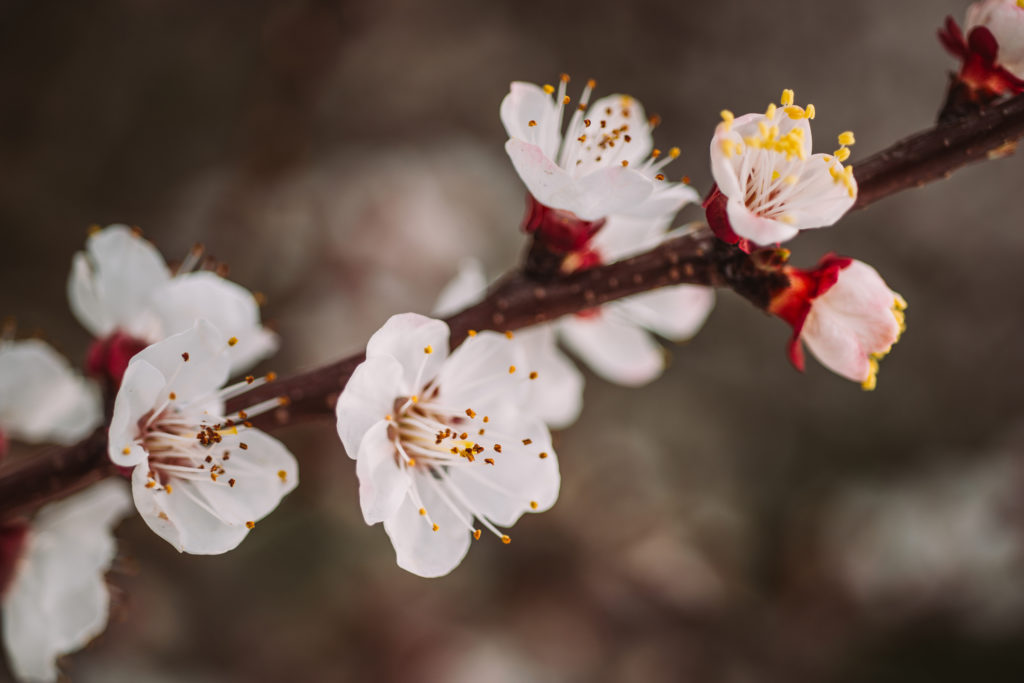Plum blossom is like the Khloe Kardashian of flowers; overshadowed by its more attention-seeking relative, cherry blossom, it rarely gets the credit it deserves. But plum blossom is just as pretty and fun to be around, offering a host of flower viewing events throughout the city from February until mid to late March. Catch them while you can at these five places to see plum blossom in Tokyo.
Yushima Tenjin
Yushima Tenjin shrine – dedicated to the deified 9th century scholar Michizane Sugawara – is an absolute classic plum blossom spot in the capital. Close to Ueno Park at the top of a picturesque slope, ume fans have been coming here since Edo to enjoy the more than 300 trees in bloom from mid to late February.
Festival stands in the shrine grounds offer up plum-themed food and drink (which generally tastes better than sakura-flavored fare), and there are traditional music and art performances at the weekend. Spot the racks in front of the main shrine straining under the weight of wooden plaques inscribed with prayers for academic success. If the bronze cow near the entrance has a suspiciously shiny backside, its because of visitors stroking it for good health – join the queue if you feel a cold coming on.
Details: Until March 8 / 8 a.m. – 7.30 p.m. / Free.
How to get there: Yushima station (Chiyoda and Oedo lines), Exit 3, 2 minutes walk.
Jindai Botanical Gardens
Jindai is home to nearly 5,000 species of plants, including a plum blossom section of around 180 trees. Take a guided tour of the garden to learn the labor of plum growing, or experience the flush of red and white blossom in total ignorance – both are rewarding. After, you can explore nearby Jindai-ji, a secluded temple and grounds lined with traditional shops and teahouses. Though not strictly plum-related you should also sample the local soba noodles, touted as Jindai-ji’s speciality.
Details: Until March 5 /9.30 a.m. – 5 p.m., closed Mondays (Tuesdays if Mon is a holiday) /¥500 for entrance to the gardens.
Access: Chofu station (Keio line). From Chofu take the Keio bus to Jindai-ji and get off at Jindai-shokubutsu-koen-mae.
Ikegami Baien
Ota’s official flower is the ume so you can count on the ward to put on a decent plum blossom show. Ikegami Baien is a garden park with around 370 trees all gathered together on a fragrant hillside. It’s a more tranquil plum party; with tree-shrouded paths leading past teahouses and the soundtrack of water slowly dripping through rocks. Formerly the home of a manager of a Tsukiji restaurant, the garden was donated to Ota City as a public place to enjoy everyone’s favorite seasonal pastime of flower viewing.
Don’t miss nearby Ikegami Honmon-ji, the death place of Nichiren, a leading monk and founder of the Nichiren sect of Buddhism. The temple’s extraordinary five-story pagoda is the oldest in the Kanto region.
Details: Until March 8 / 9 a.m. – 4.30 p.m., closed Mondays (Tuesdays if Mon is a holiday)/¥100 for entrance to the park.
Access: Ikegami Station (Tokyu Ikegami line), 20 minutes walk.
Kameido Tenjin
Michizane Sugawara was clearly a big fan of plum blossoms from a young age, composing a haiku about the flower when he was just five years old. Kameido Tenjin is another shrine devoted to the god of learning where you can walk among the 300 or so plum trees snapping artsy photographs of the otoko-bashi, a gorgeous arched red bridge with a view of the temple and Tokyo Skytree in the background. Stick around past sunset to see the temple lit-up at night with the twinkling lights of Japan’s tallest tower behind.
Details: Until March 5 / Free / 6 a.m. – 5 p.m. (Main hall), grounds open 24 hours.
Access: Kameido station (JR Sobu line), 15 minutes walk.
Hanegi Park
Access to Hanegi Park is via Umegaoka station which translates as “plum blossom hill”, making it one of the most obvious destinations for plum blossom viewing in Tokyo. There are around 650 plum trees but the real draw is the great range of festival activities including music, poetry classes, tea ceremonies and more. Plenty of food stalls serve up traditional festival food like yakisoba (fried noodles) as well as variations on plum blossom cuisine – the plum madeleines are a real winner.
Details: Until March 5 / 10 a.m. – 4 p.m. / Free.
Access: Umegaoka station (Odakyu Odawara line), 2 minutes walk.






This site is protected by reCAPTCHA - Privacy Policy - Terms of Service
Such a beautiful season in Japan.
Les miracles du Japon. Super……